Naples, new discoveries at Sansevero Chapel: prince Di Sangro synthesized ultramarine blue
Research by theUniversity of Bari “Aldo Moro” has uncovered new findings about material experiments by Raimondo di Sangro, 7th Prince of Sansevero (Torremaggiore, 1710 - Naples, 1771), famous for the sumptuous Sansevero Chapel in Naples, a temple of Baroque sculpture: in particular, the discoveries concern the creation of artificial gemstones conducted by the prince during the 18th century.
The study was carried out by researchers from the Interuniversity Research Center “Seminar on the History of Science” in collaboration with those from the Department of Earth and Geoenvironmental Sciences at the University of Bari Aldo Moro. The results, anticipated today at a press conference, will be released and published from March 6 in the article In search of the Phoenix in eighteenth century Naples. Raimondo di Sangro, nature mimesis and the production of counterfeit stones between palingenesis, alchemy, art and economy, forthcoming online in Open Access in the new issue of the scientific journal Nuncius .Journal of the Material and Visual History of Science. The research was presented (today, March 5) at the Sansevero Chapel Museum by director Maria Alessandra Masucci and the University of Bari team that carried out the studies, led by Francesco Paolo de Ceglia together with Andrea Maraschi of the Interuniversity Research Center “Seminar on the History of Science.” Alessandro Monno and Gioacchino Tempesta of the Department of Earth and Geoenvironmental Sciences spoke at the presentation.
Among his countless experiments, Raimondo di Sangro is known to have devoted himself to the production of artificial gemstones and the coloring of glass. For colors in general he nurtured a special attention. Even those used for the vault of the Chapel (painted by Francesco Maria Russo, and known as the Glory of Paradise or Paradise of di Sangro) are the result of his inventions: the blues, the greens, the golds, all bright and radiant colors, the product of a formula created by Raimondo di Sangro himself, which still today, after more than two hundred and fifty years, shine with the same intensity, as if the patina of time had in no way dimmed them.
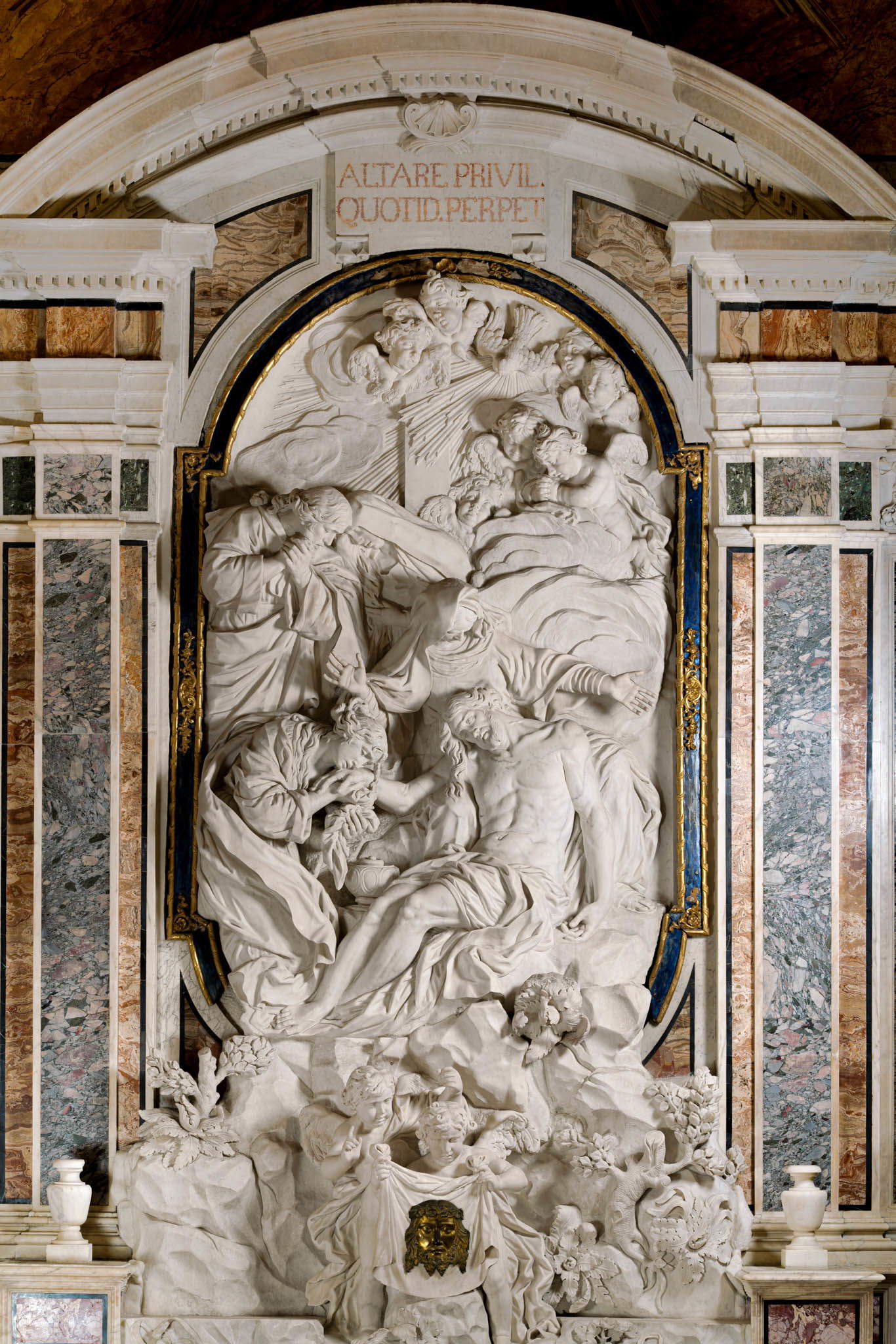
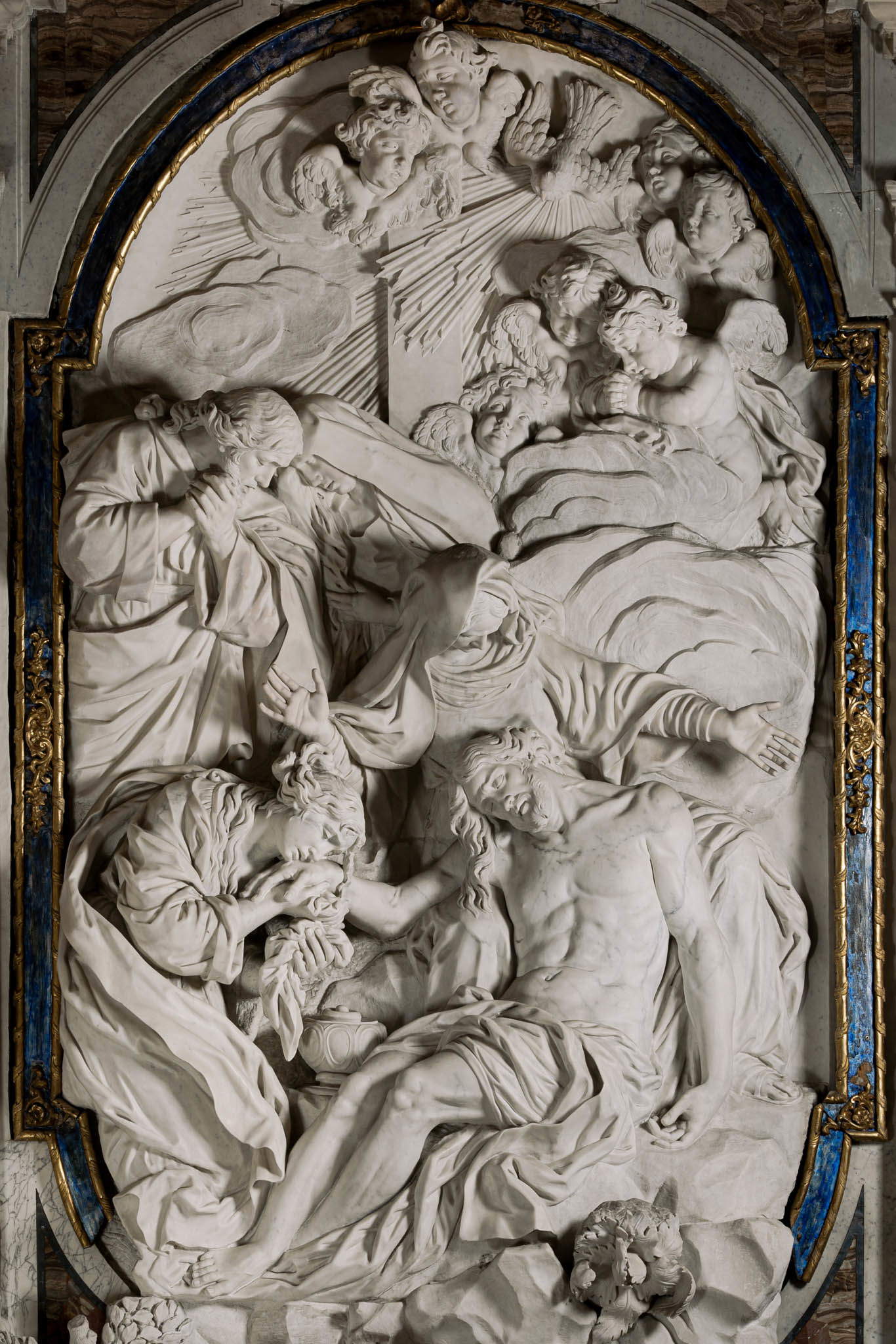
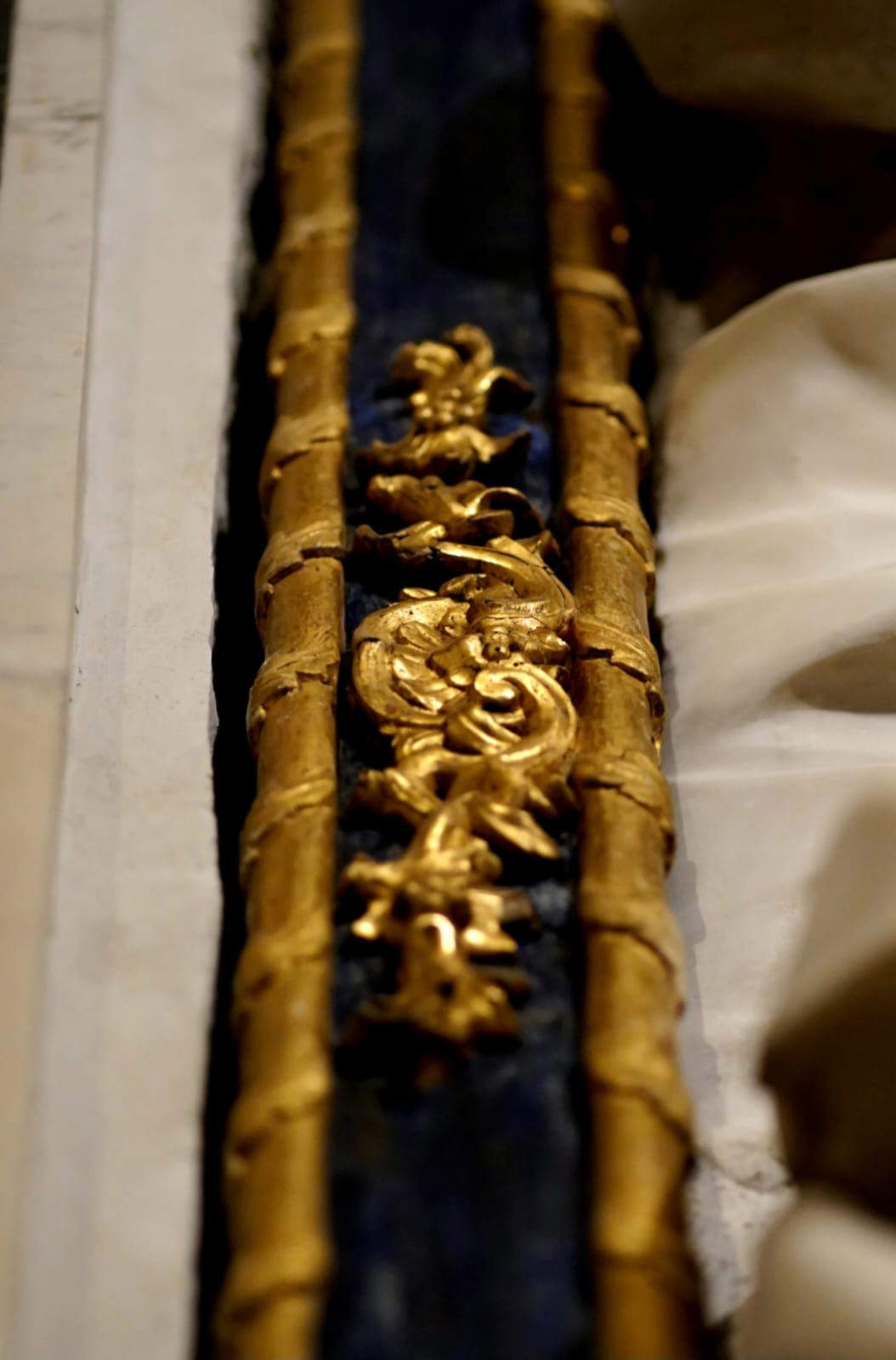
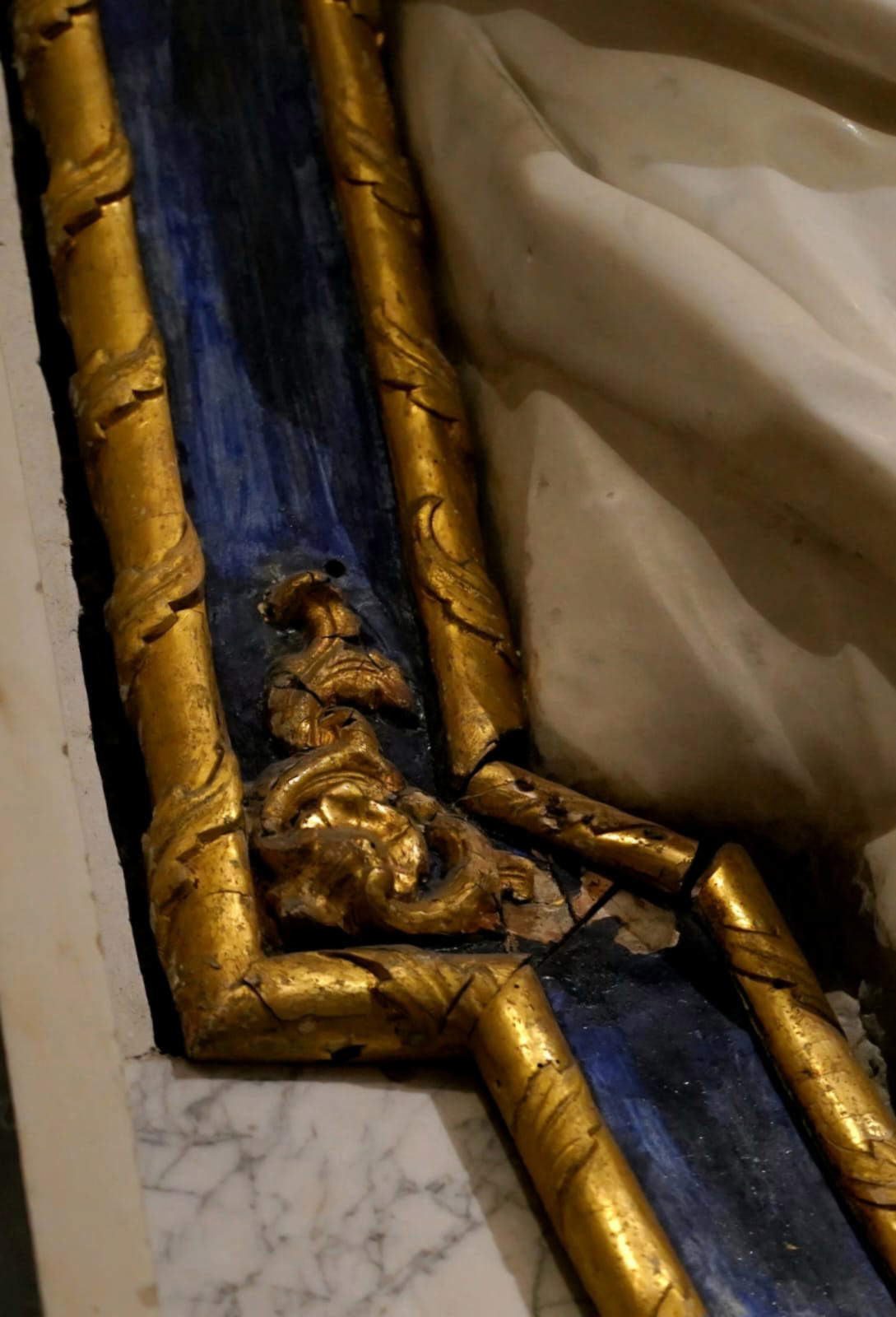
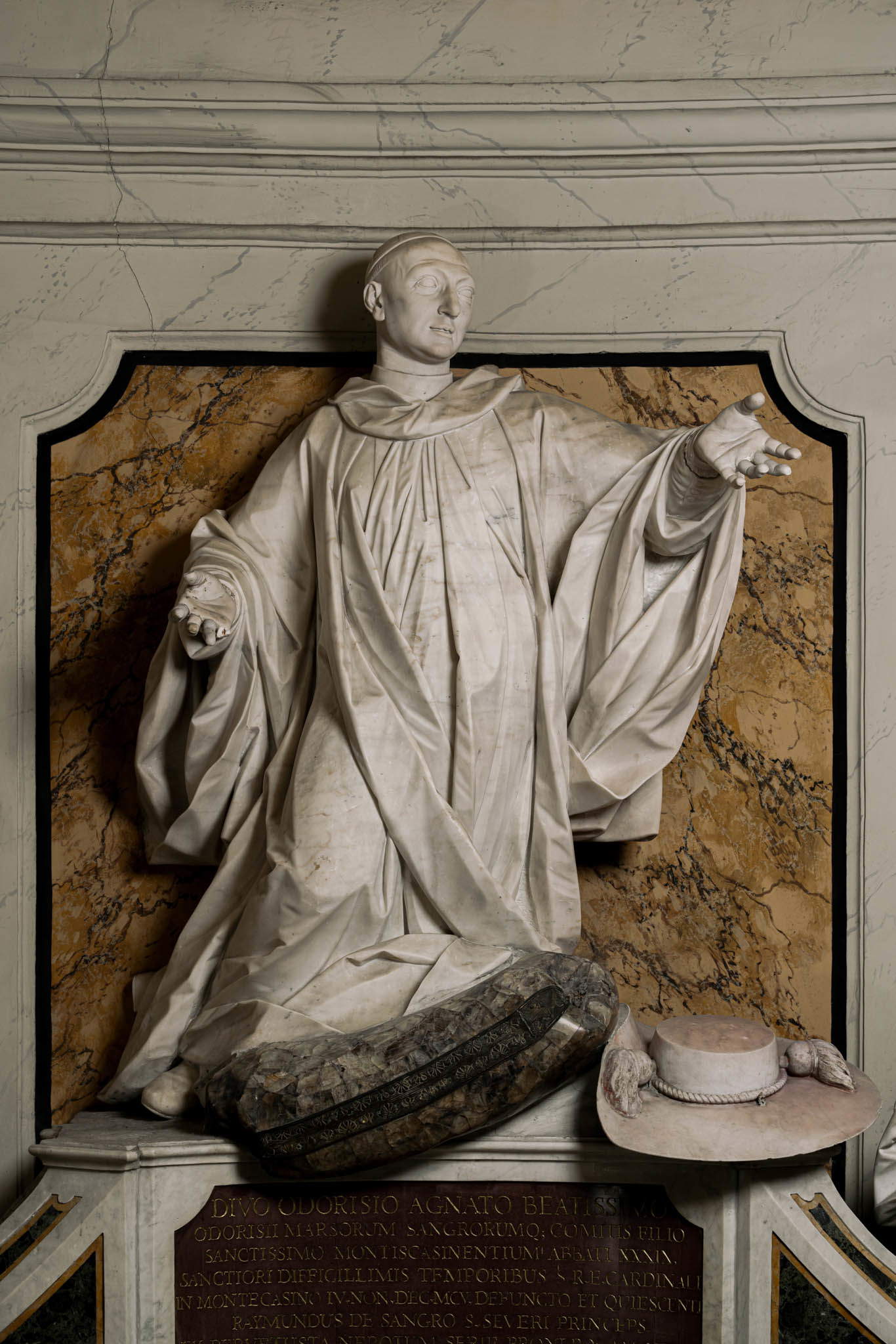
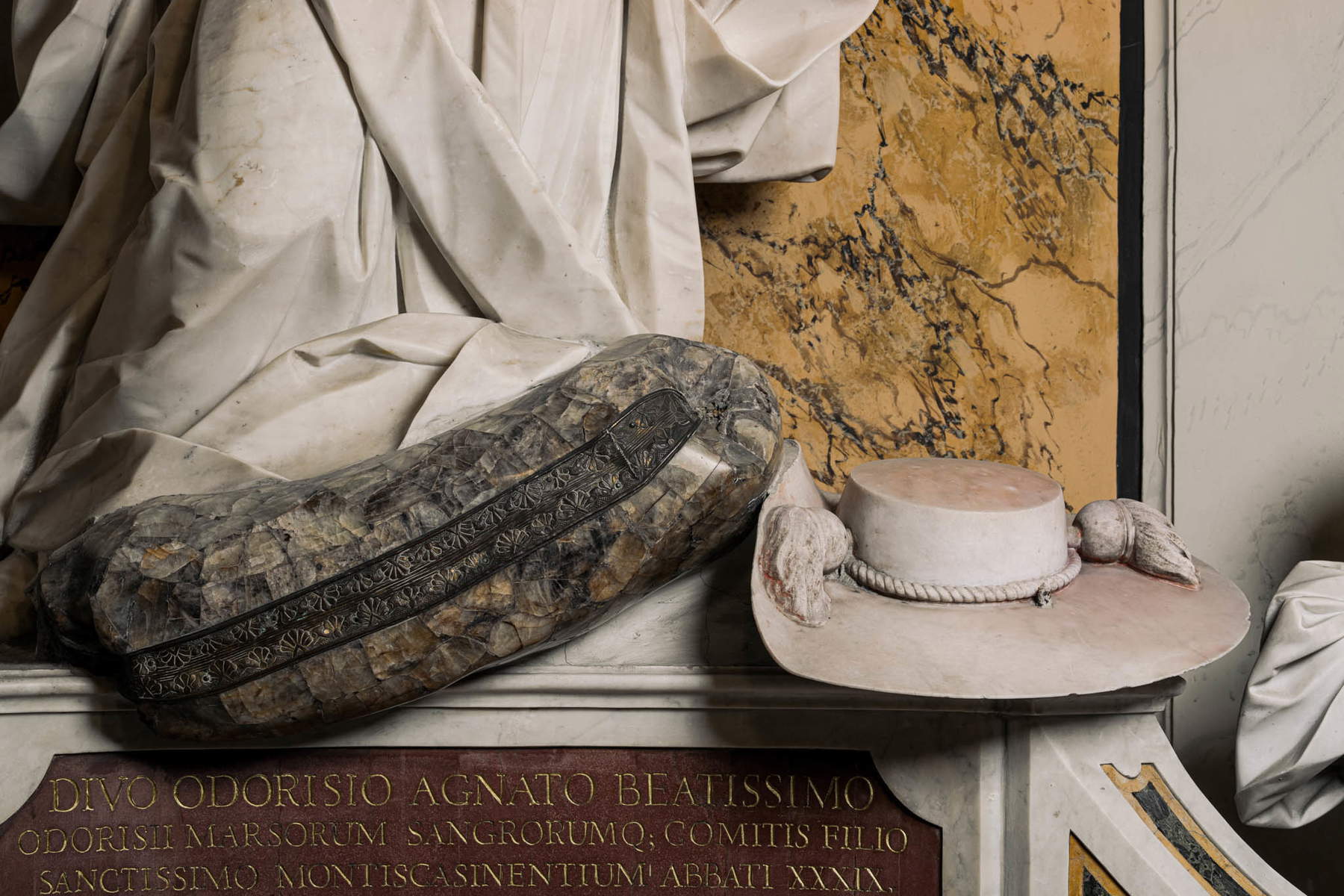
The multidisciplinary paper, which presents the new research, combines approaches and methodologies from the history of science and mineralogy and illustrates the results obtained during two separate investigations carried out at the Sansevero Chapel Museum, focusing on the material re-creation techniques used by Raimondo di Sangro to adorn the family chapel with red and blue pigments. Analysis for the first time confirms that the prince of Sansevero was able to create the artificial ultramarine blue used for the frame around the high relief above the high altar executed by Francesco Celebrano and Paolo Persico in the 1860s. To date, this appears to be the first ever recorded example of the production of this artificial pigment, according to scholars at the University of Puglia.
The prince’s discovery is said to have occurred more than fifty years before Jean-Baptiste Guimet, the French chemist who in 1828 succeeded for the first time, officially, in synthesizing ultramarine, the very expensive blue pigment obtained in nature from lapis lazuli. And more than a decade before Goethe’s Sicilian account, believed by specialists to be the earliest indication of the artificial production of such a pigment.
In Raimondo di Sangro’s underground laboratory, around which numerous legends hovered, the recipe for reproducing that color as precious as gold had thus already been found, and long ago. Today, for the first time, the multidisciplinary research of historians of science and mineralists has been able to prove the veracity of the sources regarding the Prince of Sansevero, starting from an almost negligible detail found in a famous guidebook of the city of Naples at the end of the 18th century, and delving under the microscope into the secrets of the Sansevero Chapel, on the trail of two colors: red and, above all, blue.
In the course of on-site investigations, scholars also noted the unusual use of fluorite as a sculptural material, particularly for the cushions of the statues of St. Oderisio (Francesco Queirolo, 1756) and St. Rosalia (Francesco Queirolo, 1756). The further discovery opens the way for possible new avenues of research.
These valuable new studies testify to the work of enhancing the history and work of Raimondo di Sangro that the Sansevero Chapel Museum is constantly pursuing, both in perfectly preserving the Baroque jewel conceived by the prince and in finding innovative ways of popularizing the incessant activity that marked Raimondo di Sangro’s life.
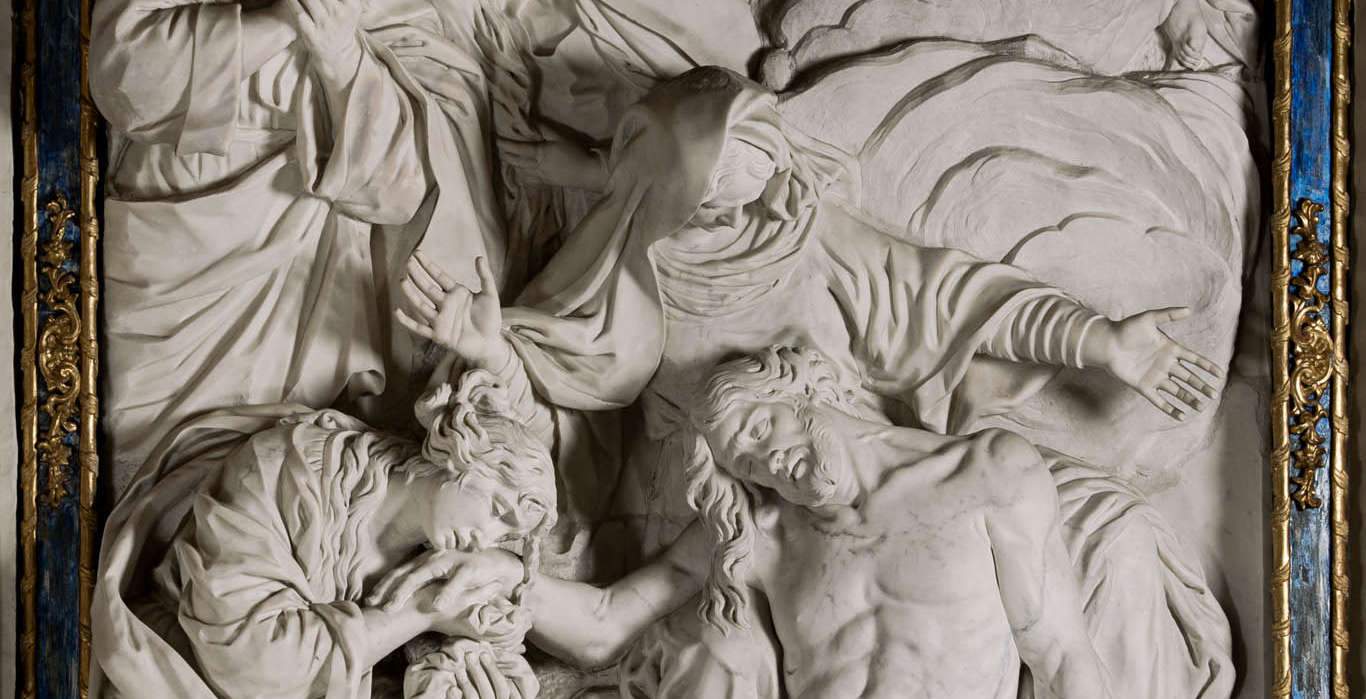 |
| Naples, new discoveries at Sansevero Chapel: prince Di Sangro synthesized ultramarine blue |
Warning: the translation into English of the original Italian article was created using automatic tools. We undertake to review all articles, but we do not guarantee the total absence of inaccuracies in the translation due to the program. You can find the original by clicking on the ITA button. If you find any mistake,please contact us.




























